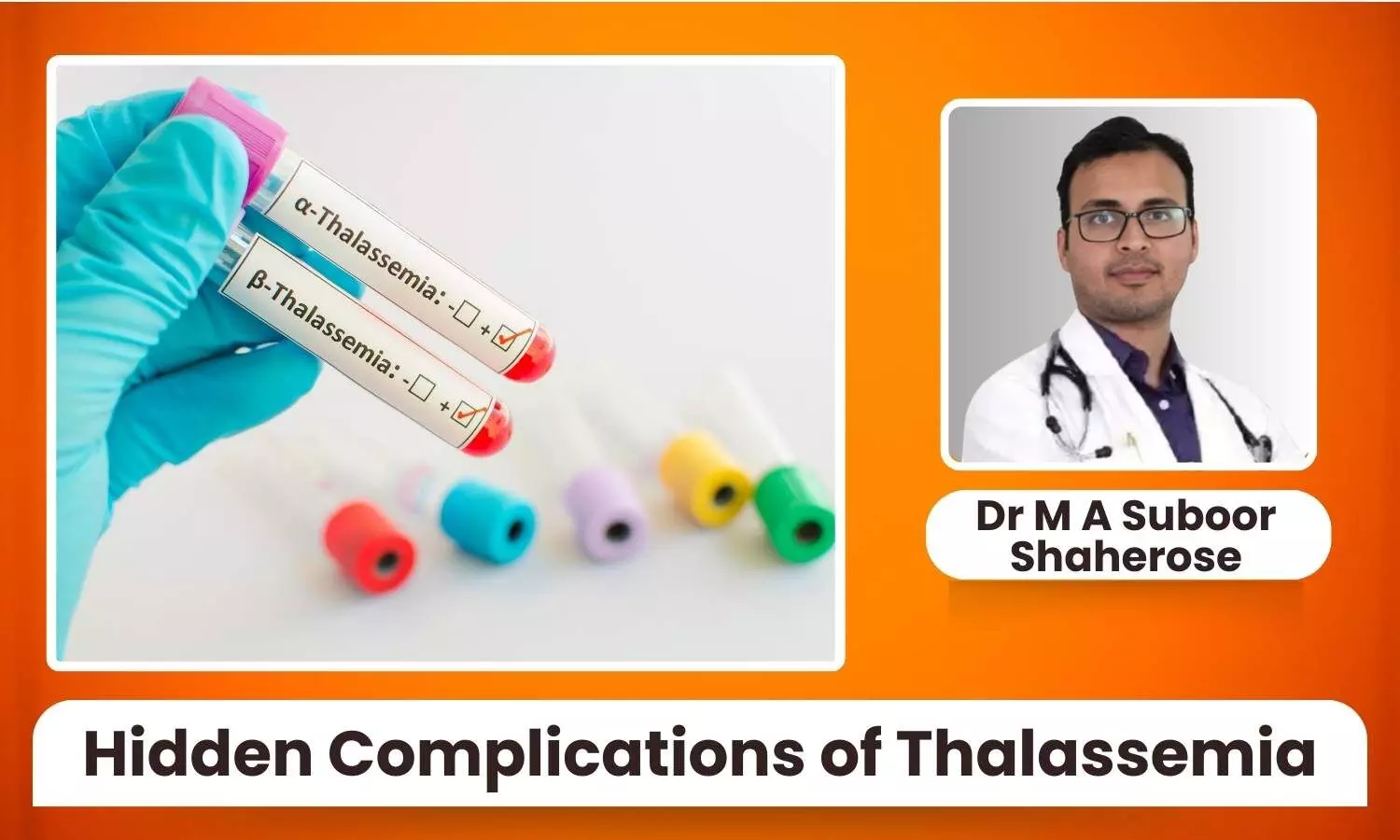Iron Overload from Inside Out: Managing Hidden Complications of Thalassemia - Dr M A Suboor Shaherose

When most people hear the word "thalassemia," they think of anaemia, blood transfusions, or tired-looking children who need lifelong care. But there is another aspect to this condition that is sometimes overlooked: iron overload.
While iron is essential for health, an overabundance of it, especially when it builds silently within the body, can eventually destroy vital organs.
Iron overload is more than just a side effect for those with thalassemia, especially those with more severe forms that require multiple transfusions. It is a serious, lifelong condition that can affect hormones, heart health, joints, and the pancreas.
The danger lies in how slowly it creeps up, usually remaining unnoticed until major damage has occurred.
Why is there Iron Overload in Thalassemia?
Thalassemia is a disorder in which the body fails to produce enough haemoglobin, causing chronic anaemia. Many individuals require frequent blood transfusions in order to survive and thrive. However, iron is present in all units of blood, and the human body has no natural method for eliminating excess iron.
This iron eventually accumulates in a variety of organs. The liver takes the brunt of the iron, but it does not stop there. It permeates into the heart, endocrine glands, joints, and bones, disrupting normal function and causing long-term problems.
Hidden Organ Complications
While doctors and families usually focus on controlling anaemia, the complications caused by iron overload can be just as dangerous, if not more so. Some of the lesser-known yet extremely important implications are:
1. Hormonal Imbalance (Endocrine Dysfunction)
Excessive iron consumption can affect the pituitary gland, thyroid, pancreas, and reproductive processes. Iron deficiency can result in delayed puberty or infertility, development problems in children, diabetes (related to insulin production in the pancreas), and hypothyroidism (fatigue and weight gain).
These implications can have a considerable impact on quality of life, especially in young patients who are otherwise well-treated for their anaemia.
2. Joint and Bone Conditions
Excess iron in bones and joints can result in stiffness, pain, limited mobility, early arthritis, and osteoporosis. Because these symptoms develop gradually, they are commonly dismissed as growing pains or ageing—until they become severe.
3. Heart problems
Iron deposits in the heart can cause electrical and pumping problems, resulting in arrhythmias, cardiomyopathy, and heart failure.
Heart issues remain one of the leading causes of death in people with transfusion-dependent thalassemia who do not maintain adequate iron levels.
What can be done?
These issues are avoidable and manageable, especially with early detection and the appropriate treatment method.
Iron chelation therapy
This is the major treatment for removing excess iron from the body. Medicines (oral and injectable) bind to iron and help it move through the urine or stool. Chelation should be taken on a regular basis and carefully monitored for effectiveness.
Regular monitoring
Serum ferritin levels are routinely tested to forecast iron reserves, as are MRI scans of the liver and heart for iron deposits, hormone level assessments, and blood sugar tests.
These help doctors understand where iron is accumulating and which organs are at risk, allowing treatment to be tailored accordingly.
Multidisciplinary care
Transfusions are not the only way to manage thalassemia. Haematologists, endocrinologists, cardiologists, and orthopaedic specialists must all collaborate to finish the process. Addressing iron overload early on can significantly improve both lifespan and quality of life.
Importance of Awareness
In India, where thalassemia is common and awareness is growing, many patients receive transfusions but do not always follow up with iron monitoring or chelation therapy. What was the outcome? Hidden issues build up over time, often when it is too late to remedy the harm.
Patients, caregivers, and even general practitioners must understand that iron overload is more than just a lab test result; it is a serious, organ-damaging condition that requires ongoing therapy.
Do Not Ignore the Signs
If you or someone you care about has thalassemia and is suffering symptoms such as growth delays, joint soreness, fatigue, irregular periods, or unexplained high blood sugar, your body may be attempting to warn you of concealed iron buildup.
Do not wait until the symptoms worsen. See a specialist. With the proper treatment, these hidden difficulties can be addressed, and an improved quality of life is fully possible.


